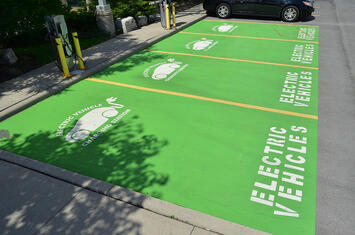
Recent news about EV battery fires does not bode well for California Governor Newsom’s executive order to ban the sale of gas-powered vehicles by 2035.
The Bolt, the only EV that GM is selling in North America, has been “tied to at least nine fires” since early 2020, and Hyundai’s vehicles were involved in about 15 fires. Meanwhile, three Tesla’s have burst into flames over the past four months. So far, 27 EV battery fires and still counting.
Firefighters may need 30,000 to 40,000 gallons of water to contain a Tesla electric vehicle (EV) blaze than they would normally use for a mainstream gas-powered car that was on fire.
General Motors announced in August 2021 that they were recalling 73,000 Chevrolet Bolt EV’s in addition to the 70,000 Bolts that were made between 2017 and 2019. Fixing all 143,000 of the Bolts being recalled for fire risk to replace new battery modules could, as Morningstar analyst David Whiston told the Detroit Free Press, cost GM some $1.8 billion.
Another “hit” on those potential EV sales projections is the German trend of banning EV’s from parking underground due to potential EV battery fires.
In 2020, a California couple awoke to a blaring car alarm and a burning house. The blaze had started in one of the two Tesla S vehicles in their garage and spread to the other.
The culprit in nearly all EV fire cases is the lithium-ion batteries that power them, and which burn with extraordinary ferocity. Adding to the fire and heat danger posed by these events is the extreme toxic fluoride gas emissions generated. According to one study, these fumes may in some circumstances be a larger threat, especially in confined environments where people are present.
Since lithium-ion fires are a chemical reaction they can only be cooled not extinguished. They end up burning for several days in some cases. In Germany, damage to a parking structure was extensive. So, for this German parking structure, it has chosen to ban all electrified vehicles from parking underground. That includes hybrids, PHEV, and EVs, whether they contain lithium-ion or nickel-metal hydride batteries.
Most of the California EV’s are currently owned by folks with higher incomes than that of the working poor. Those wealthier owners have greater access to personal garages in their homes to charge their EV’s, or access to charging stations in new apartments that have underground parking. Caution to the wind is that parking in confined areas of garages and underground parking may not be the best place to park EV’s.
Read the rest of this piece at CAPoliticalReview.com.
Ron Stein is an engineer who, drawing upon 25 years of project management and business development experience, launched PTS Advance in 1995. He is an author, engineer, and energy expert who writes frequently on issues of energy and economics.
Photo credit: Open Grid Scheduler via Flickr under Public Domain.












